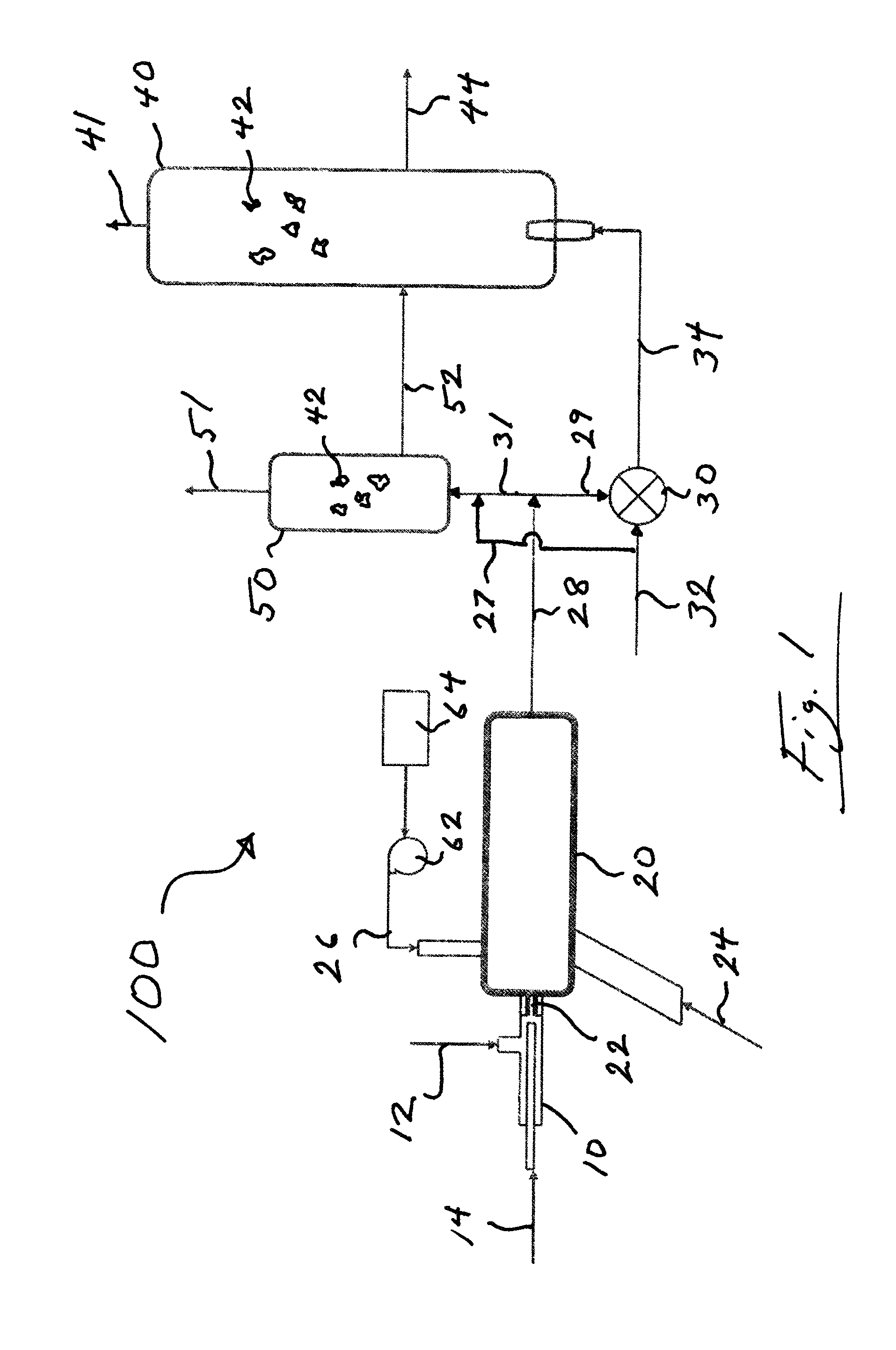Sulfide generation process and system for syngas fermentation
a technology of syngas fermentation and sulfide, which is applied in the field of syngas fermentation, can solve the problems of inability of yeasts to ferment csub>5/sub>sugar to ethanol, inability to readily fermentable carbohydrates, and inability to convert bioconversion, etc., and achieves the effect of simplifying the delivery of hydrogen sulfide and cost-effectiveness
- Summary
- Abstract
- Description
- Claims
- Application Information
AI Technical Summary
Benefits of technology
Problems solved by technology
Method used
Image
Examples
example
[0079]The following prophetic example is meant to illustrate and not to limit the scope of the invention. The process and operation of FIG. 1 will be described in the context of the recovery and production of ethanol. The reference to FIG. 1 encompasses a description of a computer simulation of a process producing approximately 3760 kilograms of ethanol per hour. The process is readily adaptable to making other oxygenated products, such as acetic acid, butanol, propanol, butyric acid, isopropanol, and the like. Reference numbers refer to the elements of FIG. 1.
[0080]Oxygen at a mass flow rate of about 309.9 kg / hr from oxygen stream 12 and natural gas at a rate of about 25.9 kg / hr as burner gas from burner gas stream 14 are provided to an oxygen burner 10. The resulting reaction provides high-temperature gas stream 22 at a mass flow rate of approximately 335.7 kg / hour. The high-temperature gas stream 22 passes through a nozzle into the partial oxidation reformer 20. The high-temperat...
PUM
| Property | Measurement | Unit |
|---|---|---|
| temperature | aaaaa | aaaaa |
| temperature | aaaaa | aaaaa |
| temperature | aaaaa | aaaaa |
Abstract
Description
Claims
Application Information
 Login to View More
Login to View More - R&D
- Intellectual Property
- Life Sciences
- Materials
- Tech Scout
- Unparalleled Data Quality
- Higher Quality Content
- 60% Fewer Hallucinations
Browse by: Latest US Patents, China's latest patents, Technical Efficacy Thesaurus, Application Domain, Technology Topic, Popular Technical Reports.
© 2025 PatSnap. All rights reserved.Legal|Privacy policy|Modern Slavery Act Transparency Statement|Sitemap|About US| Contact US: help@patsnap.com


